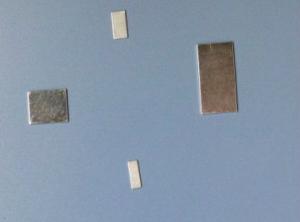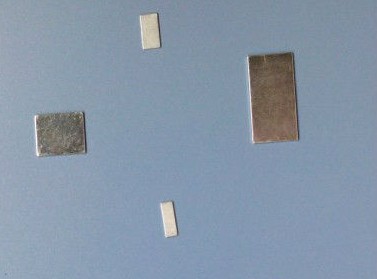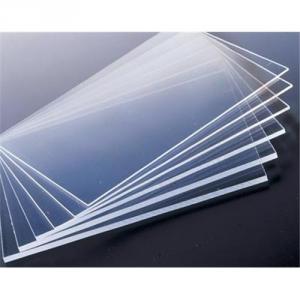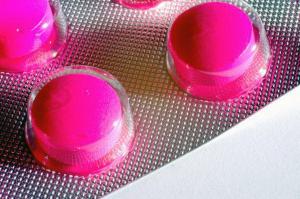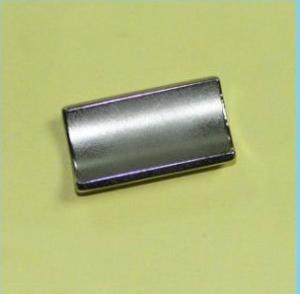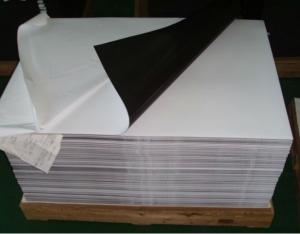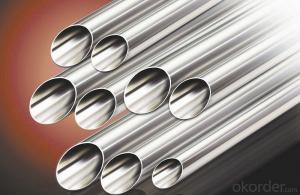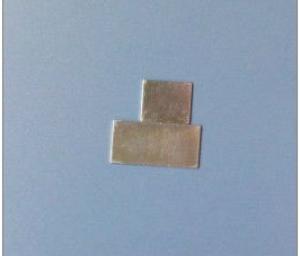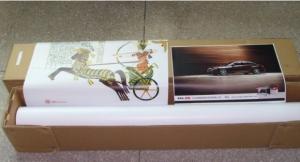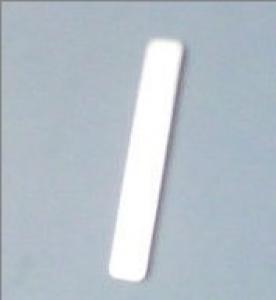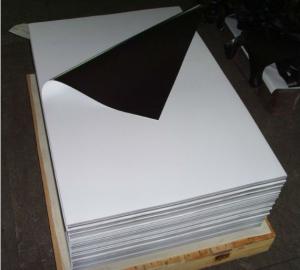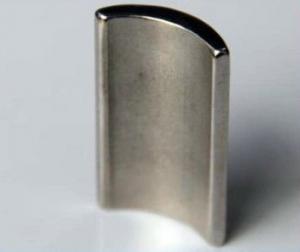Super Thin Rectangle Neodymium Magnet
- Loading Port:
- China Main Port
- Payment Terms:
- TT or LC
- Min Order Qty:
- 500 Pieces pc
- Supply Capability:
- 100 Tons per Month pc/month
OKorder Service Pledge
OKorder Financial Service
You Might Also Like
1) Material: Sintered Neodymium-Iron-Boron;
2) Temperature: 200 centigrade;
3) Grade: N28EH, N30EH, N33EH, N35EH for your choice;
4) Shape: Rectangle;
5) Size:according to customers' request;
6) Coating:Ni, Zn, gold, copper, epoxy and so on;
7) Application: sensors, motors, rotors, wind turbines,wind generators, loudspeakers, magnetic hooks, magnetic holder, filters automobiles and so on;
8) Quality Assurance :ISO9001:2000, RoHS report by SGS, Reach Certificate
9)Physical Property of Magnetic Material:High Coercive Force, High density, High remanence, Anti-demagnetizing, Strong corrosion-resistance, Different series, different work temperature.
- Q: Is the U disk made of magnetic material?
- Not a magnetic material, is the main body of semiconductor material silicon.U disk is the "flash" (Flash Memory). It is made from silicon integrated circuits, each binary storage unit is a transistor and FET. Very similar, not by magnetic storage, but the injection or removal of electronic storage of binary information.
- Q: What is the area of a magnetic material where individual atoms line up?
- Previous poster has an excellent answer. I would only add that the reason there is a better mechanical connection is also due to teh softness of the aluminium
- Q: At what--if any--temperature does a magnet melt and is a melted magnet still magnetic?
- There is no single answer to this question, because a magnet can be made of many different materials, each of which has a different melting point. But most magnets are made of iron, which melts at 1535 C, or steel, the most common alloys of which typically melt at about 1370 C. Magnets lose their magnetization when liquid, and in fact long before that point. Magnets are magnetic because tiny regions of the metal are aligned parallel to each other. When the metal softens, these regions are free to rotate and the magnet de-magnetizes.
- Q: What is magnetic alignment?
- Look § Magnetic Domains in this link The main implication of the domains is that there is already a high degree of magnetization in ferromagnetic materials within individual domains, but that in the absence of external magnetic fields those domains are randomly oriented. A modest applied magnetic field can cause a larger degree of alignment of the magnetic moments with the external field, giving a large multiplication of the applied field. hyperphysics.phy-astr.gsu.edu/hba. Goodbye
- Q: I was looking around the house for something that would block the attraction of magnets. I‘ve stuck two magnets on opposing sides of just about every non conductor I could find. Some reduced the strength of the magnets trying to stick together but they still stuck. Thanks
- Nothing blocks magnetic fields. You can put ferromagnetic materials (like mu metal) to divert magnetic fields around a space, but the magnetic fields are just constrained to lie mostly within the metal, the field strength is increased, and there is still some field present outside it (on both sides). Any metal can that magnets are attracted to, will provide some shielding (as I describe above). Your test using two magnets doesn't do what you thought.
- Q: On a side-note, rip out their teeth?
- Probably not, as braces are made from non-magnetic materials. The wire used in braces is usually non-magnetic stainless steel or perhaps titanium. Constant magnetic field will not affect them. A varying or alternating field however, can induce a magnetic and an electric field in any material which conducts electricity so it can have an effect. That's why MRI machines and very, very large power generators could potentially cause nasty effects.
- Q: just started magnetism today and i can‘t get my head around magnetic flux density can anyone give me help?
- Magnetic flux density: B refers to the concentration of magnetic filed lines per unit area of material. Quantitatively, B is the magnetic field intensity H divided by the permeability μ of the material. So if the material is very permeable to the external magnetic field then the material will be dense with magnetic field lines(i.e., magnetic flux).
- Q: were having a project that is all about electromagnetics? can you suggest other? tnks
- If you want cheap experimental material (very powerful stable toroidal magnets)strip them from the magnetron's in scrap microwave ovens.
- Q: are there any materials that alternate between ferromagnetism and diamagnetism?
- All materials that aren't effected by a magnetic field can be considered diamagnetic to a differing degrees. In the making of Alnico magnets , which are rather strong ferromagnetic magnets, the three elements added are aluminum, nickel and cobalt (that's where the name alnico comes from). All three of those elements are diamagnetic separately, yet combined they are very ferromagnetic The same occurs with the rare earth magnets. Neodymium alloy (Nd2Fe14B) is made of neodymium, iron and boron. None of the ingredients by themselves are ferromagnetic, but are extremely ferromagnetic (except iron) when the elements are combined
- Q: DVD disc is not magnetic material?
- Using reflective film pressing disc or sintered into concentric different lengths of reflective and non reflective pits record information, read the time hair out of the laser signal irradiation pits, read back signal reflecting the length of digital signal is converted back to record.
1. Manufacturer Overview
| Location | Guangdong,China (Mainland) |
| Year Established | 2010 |
| Annual Output Value | US$2.5 Million - US$5 Million |
| Main Markets | North America South America Eastern Europe Southeast Asia Africa Eastern Asia Western Europe Northern Europe Southern Europe South Asia |
| Company Certifications | ISO9001:2000 |
2. Manufacturer Certificates
| a) Certification Name | |
| Range | |
| Reference | |
| Validity Period |
3. Manufacturer Capability
| a) Trade Capacity | |
| Nearest Port | Shenzhen |
| Export Percentage | 21% - 30% |
| No.of Employees in Trade Department | 3-5 People |
| Language Spoken: | English, Chinese |
| b) Factory Information | |
| Factory Size: | 3,000-5,000 square meters |
| No. of Production Lines | 2 |
| Contract Manufacturing | OEM Service Offered |
| Product Price Range | Average |
Send your message to us
Super Thin Rectangle Neodymium Magnet
- Loading Port:
- China Main Port
- Payment Terms:
- TT or LC
- Min Order Qty:
- 500 Pieces pc
- Supply Capability:
- 100 Tons per Month pc/month
OKorder Service Pledge
OKorder Financial Service
Similar products
Hot products
Hot Searches
Related keywords
